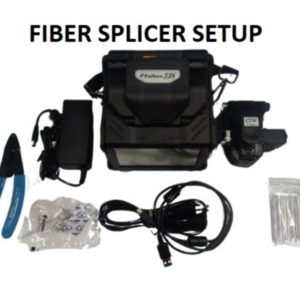Description
Atomic Absorption Spectroscopy (AAS) is a highly sensitive and precise analytical technique used to determine the concentration of specific metal elements in a sample. It is widely applied in fields such as environmental monitoring, clinical analysis, pharmaceutical testing, food and beverage quality control, and materials science. AAS is particularly effective for detecting trace levels of metals such as lead (Pb), cadmium (Cd), copper (Cu), zinc (Zn), iron (Fe), calcium (Ca), magnesium (Mg), and others.
—
Principle of AAS:
The principle of atomic absorption spectroscopy is based on the absorption of light by free atoms in the gaseous state. When a sample containing metal ions is introduced into a flame or graphite furnace, it is vaporized, and the metal ions are converted into free atoms. These atoms can absorb light at specific wavelengths that correspond to the electronic transitions of that element.
A light beam, usually from a hollow cathode lamp specific to the element being analyzed, is directed through the vaporized sample. The atoms absorb part of the light, and the amount of absorption is proportional to the concentration of the element in the sample. The decrease in light intensity is measured by a detector and used to calculate the element concentration.
—
Components of an AAS Instrument:
1. Radiation Source (Hollow Cathode Lamp):
Emits light at the characteristic wavelength of the element to be measured.
2. Atomizer:
Converts the sample into free atoms. There are two common types:
Flame Atomizer (e.g., air-acetylene or nitrous oxide-acetylene flame)
Graphite Furnace Atomizer (for higher sensitivity and lower detection limits)
3. Monochromator:
Isolates the specific wavelength of interest from the emitted light.
4. Detector (Photomultiplier Tube or CCD):
Measures the intensity of transmitted light and calculates absorbance.
5. Readout System and Software:
Converts the electrical signal into digital data, often displaying absorbance or concentration and generating calibration curves.
—
Types of AAS:
Flame AAS: Suitable for high-concentration samples with relatively fast throughput.
Graphite Furnace AAS (Electrothermal AAS): Provides higher sensitivity and lower detection limits; ideal for trace analysis.
Hydride Generation AAS: Used for elements like arsenic (As), selenium (Se), and antimony (Sb), which form volatile hydrides.
Cold Vapor AAS: Specialized technique for mercury (Hg) detection.
—
Applications:
Environmental Analysis: Detection of heavy metals in water, soil, and air.
Clinical and Biomedical: Measuring metal levels in blood, urine, and tissues.
Food and Beverage Industry: Assessing mineral and contaminant levels in food products.
Pharmaceuticals: Quality control and trace metal analysis in raw materials and final products.
Mining and Metallurgy: Determining the composition of ores and alloys.
—
Advantages:
High sensitivity and selectivity for metal ions.
Rapid and relatively simple sample preparation.
Applicable to a wide range of elements.
Cost-effective compared to more complex techniques like ICP-MS (Inductively Coupled Plasma Mass Spectrometry).
—
Limitations:
Usually limited to single-element analysis at a time.
Requires different lamps for different elements.
Matrix effects can interfere with accuracy if not properly controlled.
Limited to metal and some metalloid analysis; not suitable for non-metals.
—
Recent Developments:
Modern AAS instruments offer enhanced automation, improved safety features, advanced software for method development and data processing, and integration with autosamplers for high-throughput analysis. Some systems also feature Zeeman effect background correction or deuterium background correction to enhance accuracy.
—
In summary, Atomic Absorption Spectroscopy is a cornerstone technique in elemental analysis, valued for its reliability, specificity, and ability to detect trace levels of metals in complex sample matrices.






Reviews
There are no reviews yet.